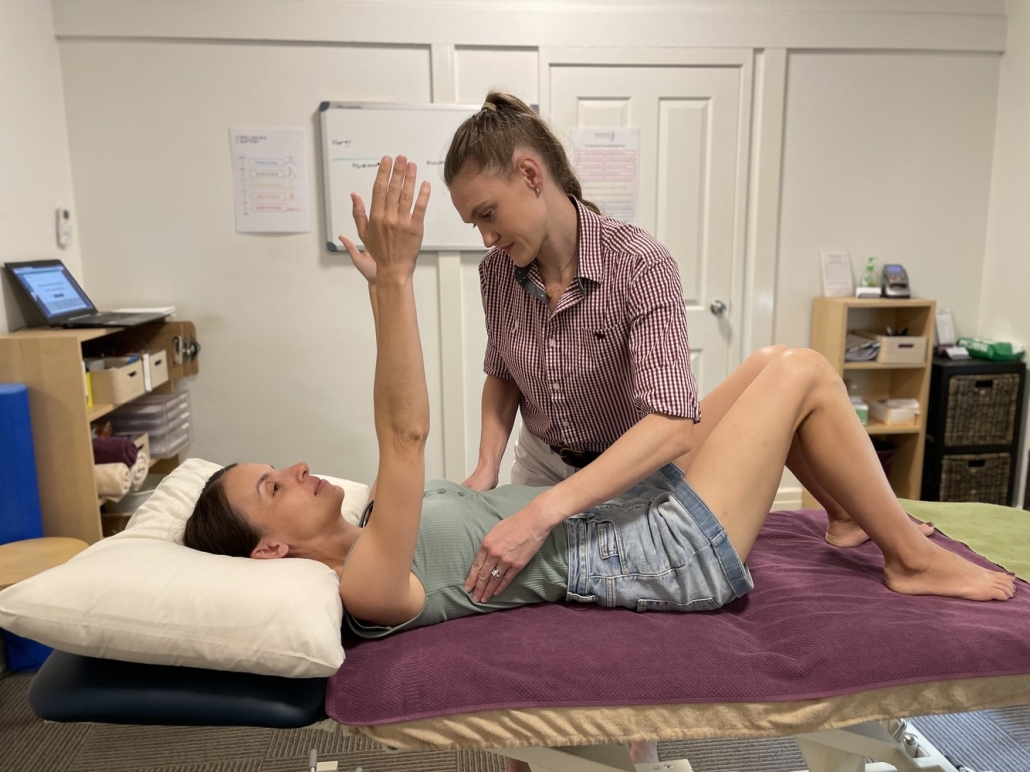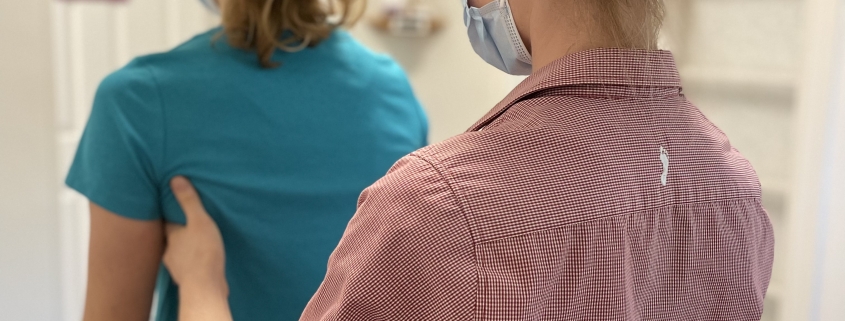Why do I have rib pain?
Why do I have rib pain? Rib pain is a common form of musculoskeletal pain. It refers to any pain that is experienced in the ribs, the rib joints or the muscles between them. Due to the proximity to the lungs, it can cause significant distress and or difficulties with breathing. This blog will help explain where your rib pain may be coming from and how physiotherapy can potentially help.
Rib anatomy
Knowing the anatomy of the rib cage is helpful for understanding rib pain. The rib cage is made up a combination of different bones and joints. There are the thoracic spine vertebrae which sit in the centre of the spine. The sternum or breastbone sits centrally at the front of the chest. The ribs run between these two and there are 12 pairs of ribs (right and left). Each rib articulates (form a joint with) two thoracic vertebrae, as well as sternum at the front. Rib 11 and 12 are sometimes called ‘floating ribs’ because they do not join the sternum at the front. There are many muscles that attach onto the ribs, the intercostal muscles refer to the muscles that are in between each rib and play an important role in breathing.

What Causes Rib Pain
Rib pain may be caused by a variety of causes. Many of these are musculoskeletal in nature but some are more serious and may require medical attention
- Rib joint dysfunction – stiffness or poor movement of the rib joints. This can occur at the rib joints at the front or back so pain may be at the front or back of the chest and may radiate around, along the line of the ribs. This may occur as a result of a trauma (such as a heavy tackle, car accident, fall off a ladder), repetitive strain (such as persistent coughing or occupational activities) or prolonged postures – especially if they are uneven or rotated. Pain is typically aggravated with particular movements and settles down if these movements or positions are avoided.
- Costochondritis – this refers to inflammation of the cartilage of the rib joint at the front (the costo-chondral joints). Pain is usually quite localised over the joint, near the centre of the chest. It is similar to rib joint dysfunction in its causes but due to its inflammatory nature can be more unpredictable.
- Intercostal muscle spasm – the muscles between the ribs can have a localised spasm resulting in rib pain. This can occur at just one level or at a few levels at once. It is likely the result of repetitive uneven loading (eg digging lots of holes when your body is not used to that) or acute overload (eg catching something heavy at an awkward angle). It may also be the result of persistent coughing
- Nerve entrapment – a much less common cause of rib pain, however sometimes severe muscle spasm can cause local entrapment of the nerves between the ribs. This is usually results in high levels of pain (even at rest), very limited movement and even breathing may feel restricted or limited.
Other causes of rib pain – less common causes of rib pain include:
- Rib fracture – usually preceded by a significant trauma (fall from a height, heavy tackle, significant car accident) or a more minor trauma (including persistent heavy coughing) in those with low bone density
- Medical causes – lung/chest infections, cancer in the lungs or ribs, pulmonary embolism. These are all serious conditions that need urgent medical attention. They are usually accompanied by other general health symptoms such as shortness of breath, high levels of persistent pain, dizziness, nausea, changes to heart rate and unintended weight loss

How can physio help?
For any pain that is musculoskeletal in nature, physio can help to manage rib pain. At Barefoot Physio we do a thorough assessment of your nerves, muscles and joints to help determine the underlying cause to your condition. All our physios have also undertaken extra training specifically in thoracic ring assessment and treatment. Treatment may involve:
- Hands on assessment and treatment – using manual therapy to address areas of tension/tightness in both muscles and joints to improve range of motion in the thoracic area and resolve any nerve irritation
- Postural education – advice about work posture/set up, sleep positions, car set up and any other positions that are relevant to you
- Exercises – you may be given exercises that focus on releasing areas of tension (such as stretches or muscles releases) or exercises that focus more on strength building and reinforcing good postural habits. Your exercises will likely change over time as your treatment progresses. Here are two examples of gentle mobility exercises that may be helpful in the early stages of rib pain
- Lat stretch
- Rib opening stretch
If you have rib, please don’t hesitate to reach out to the friendly team of Physiotherapists at Barefoot Physiotherapy. They can help relieve your pain and improve your quality of life. You can give us a call on 1300 842 850 or book online.








Leave a Reply
Want to join the discussion?Feel free to contribute!